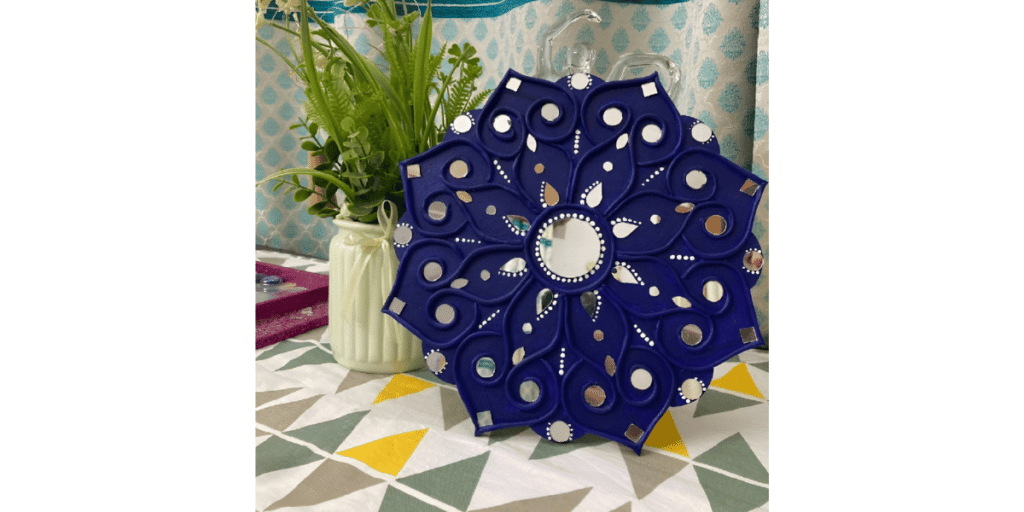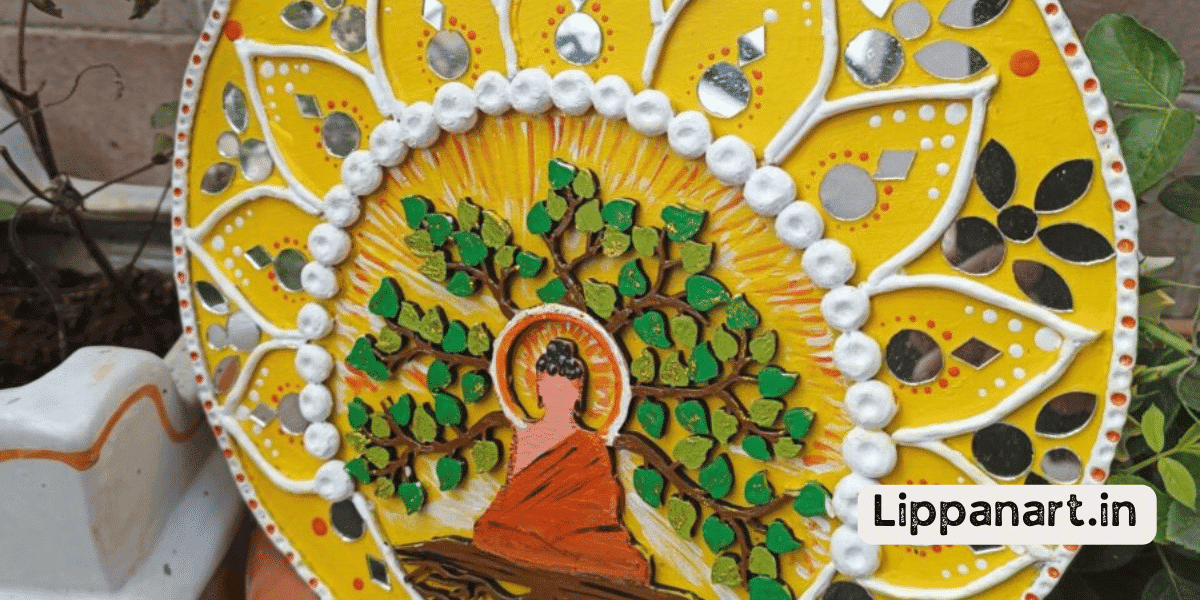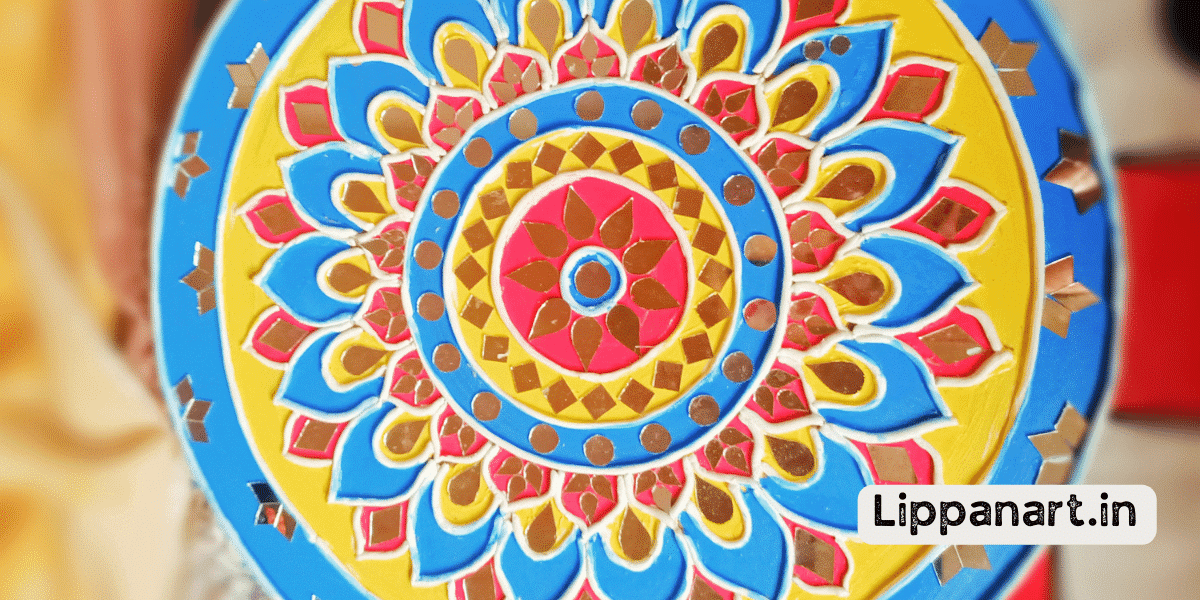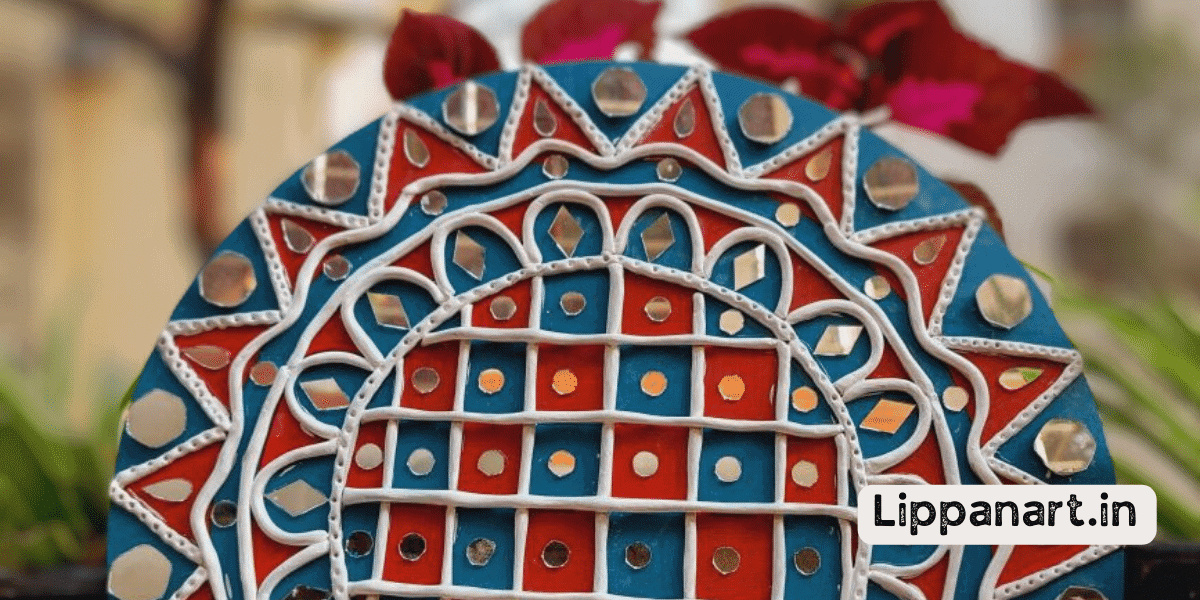Creating lippan art with clay is like sculpting a masterpiece out of a lump of soft butter.
You can use moist clay to craft stunning lippan designs with just a few tools and techniques.
From rolling coils to smudging details, you’ll be able to transform plain clay into an imaginative work of art.
By following a few straightforward steps, you can learn how to mould clay for Lippan art and craft a distinctive statement with your imaginative design.
Key Takeaways
- Work quickly and continuously to avoid drying out the clay
- Shape the clay with hands or tools, and trim edges for precision
- Add texture and details with a wooden stick
- Let the clay dry before firing for the desired texture and colour
Use Moist Clay
Using moist clay to shape lippan art is an important part of the process. To begin, make sure to work the clay quickly and continuously to avoid it drying out. Form the desired shapes with your hands or tools, and use a knife or other clay tools to trim the edges for precision.
When you’re happy with the shape, you can add texture and details with a wooden stick to create patterns and designs. Once the clay is ready, let it dry before proceeding to the firing techniques.
This will help you reach the desired texture and colour when the clay is fired.
Depending on the clay material, you may need to add additional clay to fill any gaps or add more layers of clay for a thicker piece. By cultivating patience and dedicating yourself to practice, you can become proficient in the craft of moulding moist clay to fashion distinctive Lippan art.
Have fun experimenting with new techniques, and enjoy the process of bringing your art to life.
- Editor’s Choice
- Best Seller
- Amazon Choice
Clay Sculpting Tools
Creating lippan art can be easy with the right clay sculpting tools. Knives, chisels, hands, and fingers are all useful for cutting, shaping, and detailed carving.
Combs, brushes, and other objects can be used to add texture to the clay.
To protect the artwork and give it a glossy finish, apply a glaze coating and sealing wax.
Equipped with the appropriate tools and techniques, you can produce enduring Lippan artwork that will be appreciated for generations to come.
Start with a Coil or Ball
When creating a Lippan art piece, you can begin with either a coil or a ball of clay. Coils allow for more creative shaping and colour blending, while balls are more difficult to work with due to their natural shape. Consider the design you want to create and the firing techniques you plan to use when deciding which option is best for you.

To shape the clay, press it firmly together if you’re working with coils. Flatten and even the coil, then start sculpting with your hands or tools. For a ball, flatten the edges and shape the sides before pushing the clay outward until you reach the desired shape. Be sure to keep your design symmetrical and use tools to create details.
You can also coat the piece with wax or resins to give it a glossy finish and add extra design elements. With practice, you can create a beautiful piece of Lippan art.
Pinch and Mold Details
Shape and refine the clay to create unique and intricate details for your Lippan art piece. Utilize a variety of tools, such as wooden, metal, and plastic tools, to add texture and layer colours.
Start with small details, like a flower bud, and gradually add more details to build the entire flower.
Burnish the surface of the clay for a polished, professional finish.
Have fun exploring the creative process of moulding the clay and adding layers of colours and textures to your Lippan art.
- Editor’s Choice
- Best Seller
- Amazon Choice
Texturing Techniques
To create a unique and dimensional Lippan art piece, try various texturing techniques. Use burnishing and incising for intricate details and patterns. Carve into the clay for depth and texture, and use stamps or natural objects to add even more texture.
Experiment with different firing methods to achieve a smooth glazing finish or a matte effect. Decorative glazing also adds a beautiful finish.
With only a handful of tools and techniques, you can transform your vision into reality.
Sponging and Smoothing
To craft a beautiful piece of Lippan art, there are several steps you can follow.
First, roll the edges of your clay with a rolling pin to blend colours and create depth. This will help to create a smooth and cohesive appearance.
Subsequently, as you progress, layer and sculpt curves. This technique will introduce dimension and visual intrigue to your artwork.
To add texture and dimension, use a damp sponge to dab the clay in a circular motion. This will create a patterned texture that adds visual interest to your piece.
After creating the texture, smooth out the edges with the sponge. This will give your artwork a polished and finished look.
Finally, buff the clay with a soft cloth to give it a glossy finish. This step will enhance the overall appearance of your artwork.
- Editor’s Choice
- Best Seller
- Amazon Choice
Air Dry or Kiln Bake
When creating a Lippan art piece, you’ll need to decide whether to air dry or kiln bake your clay.
Air drying is a common and convenient way to harden the clay without needing a kiln, but it may take longer and cause cracking.
Kiln baking allows you to control the temperature and humidity, providing a more reliable outcome. However, it’s a lengthy process requiring a slow increase in temperature and a cool-down period before removal.
Sealing techniques can also be used to aid the drying process.
Consider your options carefully, as the firing process will take longer and require more attention than air drying.

Paint and Finish Artwork
To paint and finish your Lippan art piece, follow these steps:
- Shape the clay.
- Apply a sealer evenly to protect it from the elements.
- Use a brush or sponge to apply the desired colours, or mix colours to create your unique palette.
- Pay special attention to areas exposed to outdoor conditions and ensure the paint is sealed.
- To give your artwork a glossy finish, use a sealer that will give it a professional shine.
- With the right sealing techniques and paint application, your Lippan art piece will last for years.
Conclusion
You’ve now learned the basics of how to shape clay for lippan art.
Through practice and a touch of patience, you can fashion exquisite and one-of-a-kind artworks that will be cherished for many years to come.
You never know – your creation might be the next big thing!
Who knows? With some practice and a bit of luck, you could be the clay sculptor everyone is talking about!

















